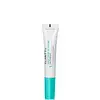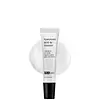What's inside
What's inside
 Key Ingredients
Key Ingredients

 Benefits
Benefits

 Concerns
Concerns

 Ingredients Side-by-side
Ingredients Side-by-side

Hydrogenated Polyisobutene
EmollientJojoba Esters
EmollientCocos Nucifera Oil
MaskingEthylene/Propylene/Styrene Copolymer
Squalane
EmollientCopernicia Cerifera Wax
Sodium Hyaluronate
HumectantPersea Gratissima Oil
Skin ConditioningCitrus Medica Vulgaris Fruit Extract
AntioxidantPalmitoyl Tripeptide-38
Skin ConditioningPyrus Malus Fruit Extract
Skin ConditioningPortulaca Pilosa Extract
Skin ConditioningGlucomannan
Skin ConditioningPalmitoyl Tripeptide-1
Skin ConditioningTocopheryl Acetate
AntioxidantWater
Skin ConditioningTribehenin
EmollientDimer Dilinoleyl Dimer Dilinoleate
EmollientTriisostearin
Skin ConditioningEthylhexyl Palmitate
EmollientButylene/Ethylene/Styrene Copolymer
Sorbitan Isostearate
EmulsifyingSucrose Cocoate
EmulsifyingTrihydroxystearin
Skin ConditioningCetearyl Ethylhexanoate
EmollientAroma
Hydrogenated Polyisobutene, Jojoba Esters, Cocos Nucifera Oil, Ethylene/Propylene/Styrene Copolymer, Squalane, Copernicia Cerifera Wax, Sodium Hyaluronate, Persea Gratissima Oil, Citrus Medica Vulgaris Fruit Extract, Palmitoyl Tripeptide-38, Pyrus Malus Fruit Extract, Portulaca Pilosa Extract, Glucomannan, Palmitoyl Tripeptide-1, Tocopheryl Acetate, Water, Tribehenin, Dimer Dilinoleyl Dimer Dilinoleate, Triisostearin, Ethylhexyl Palmitate, Butylene/Ethylene/Styrene Copolymer, Sorbitan Isostearate, Sucrose Cocoate, Trihydroxystearin, Cetearyl Ethylhexanoate, Aroma
Petrolatum
EmollientHydrogenated Polyisobutene
EmollientEthylene/Propylene/Styrene Copolymer
Beeswax
Emulsion StabilisingEthylhexyl Palmitate
EmollientCetearyl Ethylhexanoate
EmollientTocopherol
AntioxidantTribehenin
EmollientAroma
Ricinus Communis Seed Oil
MaskingSorbitan Isostearate
EmulsifyingSodium Saccharin
MaskingPortulaca Pilosa Extract
Skin ConditioningButylene/Ethylene/Styrene Copolymer
BHT
AntioxidantTrihydroxystearin
Skin ConditioningSucrose Cocoate
EmulsifyingSodium Hyaluronate
HumectantPalmitoyl Tripeptide-1
Skin ConditioningPalmitoyl Tripeptide-38
Skin ConditioningAmorphophallus Konjac Root Powder
AbrasivePetrolatum, Hydrogenated Polyisobutene, Ethylene/Propylene/Styrene Copolymer, Beeswax, Ethylhexyl Palmitate, Cetearyl Ethylhexanoate, Tocopherol, Tribehenin, Aroma, Ricinus Communis Seed Oil, Sorbitan Isostearate, Sodium Saccharin, Portulaca Pilosa Extract, Butylene/Ethylene/Styrene Copolymer, BHT, Trihydroxystearin, Sucrose Cocoate, Sodium Hyaluronate, Palmitoyl Tripeptide-1, Palmitoyl Tripeptide-38, Amorphophallus Konjac Root Powder
Ingredients Explained
These ingredients are found in both products.
Ingredients higher up in an ingredient list are typically present in a larger amount.
Aroma refers to an ingredient, or mixture of ingredients, that impart or mask a flavor.
The name is slightly confusing. This is because INCI associates aroma with flavor instead of smell.
Here is the official definition from the The International Cosmetic Ingredient Dictionary and Handbook:
“Aroma is a term for ingredient labeling used to identify that a product contains a material or combination of materials normally added to a cosmetic to produce or to mask a particular flavor.”
INCI shows the only purpose of aroma to be "flavouring".
However, due to regulation differences, some companies may use aroma in place of parfum.
In Canada, this ingredient only has to be listed in concentrations above 1%.
Learn more about AromaWe don't have a description for Butylene/Ethylene/Styrene Copolymer yet.
Cetearyl Ethylhexanoate is derived from cetearyl alcohol and sorbic acid.
It is an emollient and helps hydrate the skin. Emollients form a barrier on the skin to prevent water from escaping.
We don't have a description for Ethylene/Propylene/Styrene Copolymer yet.
Ethylhexyl Palmitate, also known as octyl palmitate, is created from 2-ethylhexyl alcohol and palmitic acid. It is a fatty acid ester.
The fatty acid content of Ethylhexyl Palmitate makes it an emollient. Emollients help soften and hydrate your skin by trapping moisture within.
Ethylhexyl Palmitate is also used to help improve the texture of cosmetics. It helps other ingredient dissolve in products and help disperse ingredients more evenly.
You'll likely find this ingredient in sunscreen, as it is often used to mix UV-blocking ingredients such as avobenzone and ethylhexyl triazone.
It can also help stabilize the fragrances in a product as a fragrance fixative.
Ethylhexyl Palmitate can be used to substitute mineral oil.
Due to its high fatty acid content, it may not be fungal-acne safe.
Learn more about Ethylhexyl PalmitateHydrogenated Polyisobutene is a synthetic polymer. Polymers are compounds with high molecular weight. Hydrogenated Polyisobutene is an emollient and texture enhancer.
In one study, Hydrogenated Polyisobutene showed better skin hydration levels than Caprylic/Capric Triglyceride. As an emollient, it helps keep your skin soft and hydrated by trapping moisture in.
Hydrogenated Polyisobutene is often used as a mineral oil replacement.
Learn more about Hydrogenated PolyisobutenePalmitoyl Tripeptide-1 is also known as pal-GHK. It is made up of 3 amino acids and palmitic acid, a fatty acid that helps it absorb into skin more easily.
This peptide is as a signal peptide, meaning it tells the skin to produce more collagen. Collagen is the key protein that helps form the skin's structure and keep it plump, firm, and hydrated.
By boosting collagen production, this ingredient supports a stronger skin barrier and helps reduce the appearance of wrinkles.
You'll most likely see this ingredient paired with Palmitoyl Tetrapeptide-7 in the well-known Matrixyl 3000 complex. While results from in-house testing should be viewed cautiously, this peptide duo is among the most studied and widely used in modern skincare.
Due to its palmitic acid base, this ingredient may not be safe for Malassezia folliculitis.
Read more about other common types of peptides here:
Learn more about Palmitoyl Tripeptide-1This synthetic, signal peptide has unique skin conditioning properties in that is a matrikine-mimetic compound.
First of all, Palmitoyl Tripeptide-38 is a signal peptide; signal peptides tell the body to create more collagen.
What is a matrikine-mimetic compound?
This peptide has the ability to mimic matrikines in skin. Our skin created matrikines by breaking down matrix proteins into peptides.
Matrikines play a role in:
Though further research is needed, this ingredient seems pretty promising. In one study, women over the age of 40 with visible photoaging used a vitamin C serum with this ingredient for 56 days (15% ascorbid acid, 5 ppm palmitoyl tripeptide‐38). The results found improvement in skin roughness and skin tone.
This peptide is also part of the famous Matrixyl synthe’6, a blend of ingredients that also includes glycerin, water, and hydroxypropyl cyclodextrin.
Learn more about Palmitoyl Tripeptide-38We don't have a description for Portulaca Pilosa Extract yet.
Sodium Hyaluronate is hyaluronic acid's salt form. It is commonly derived from the sodium salt of hyaluronic acid.
Like hyaluronic acid, it is great at holding water and acts as a humectant. This makes it a great skin hydrating ingredient.
Sodium Hyaluronate is naturally occurring in our bodies and is mostly found in eye fluid and joints.
These are some other common types of Hyaluronic Acid:
Learn more about Sodium HyaluronateSorbitan Isostearate is an emulsifer and cleaning agent. It is created from isostearic acid and sorbitol.
As an emulsifier, Sorbitan Isostearate prevents oils and water from separating.
Due to its isostearic acid base, it may not be safe for Malassezia or fungal acne.
Learn more about Sorbitan IsostearateSucrose Cocoate is created from the sucrose esters of coconut acid. Coconut acid is comprised of the fatty acids of coconut oil.
It is an emulsifier and skin conditioner.
This ingredient may not be fungal acne safe.
Learn more about Sucrose CocoateTribehenin comes from glycerin and behenic acid.
It is used as an emollient, or moisturizer. Emollients form a thin barrier on skin to prevent moisture from escaping.
This ingredient may not be Malassezia folliculitis, or fungal-acne safe.
Learn more about TribeheninThis ingredient comes from Hydroxystearic Acid, a fatty acid, and glycerin. It is used to thicken oils.
Due to its fatty acid content, it is a natural emollient.
Creating trihydroxystearin involves using a chemical reaction between hydrogen and castor oil.
This ingredient may not be Malassezia folliculitis safe.
Learn more about Trihydroxystearin